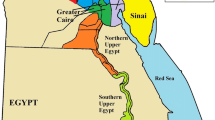Summary
A potentially infinite random-mating population of monoecious diploid individuals is subjected to a single cycle of sampling and selection based on the values of a quantitative character. In the absence of epistatic interactions, expressions are obtained for the correlation between the gene frequencies at two linked loci and for the mean and variance of linkage disequilibrium after one cycle of selection. Numerical results are presented for a range of population sizes and for various values of the genetic parameters.
Similar content being viewed by others
Literature
Baker, L. H., Curnow, R. N.: Choice of population size and use of variation between replicate populations in plant breeding selection programs. Crop Science 9, 555–560 (1969).
Hill, W. G.: On the theory of artificial selection in finite populations. Genet. Research, Camb., 13, 143–163 (1969).
Hill, W. G., Robertson, A.: The effect of linkage on limits to artificial selection. Genet. Research., Camb., 8, 269–294 (1966).
Hill, W. G., Robertson, A.: Linkage disequilibrium in finite populations. Theoret. Appl. Genetics 38, 226–231 (1968).
Karlin, S., McGregor, J.: Rates and probabilities of fixation for two locus random mating populations without selection. Genetics 58, 141–159 (1968).
Kojima, K.: Effects of dominance and size of population on response to mass selection. Genet. Research, Cambridge, 2, 177–188 (1961).
Latter, B. D. H.: The response to artificial selection due to autosomal genes of large effect. I. Changes in gene frequency at an additive locus. Aus. J. Biol. Sci. 18, 585–598 (1965).
Ohta, T.: The effect of initial linkage disequilibrium and epistasis on fixation probability in a small population, with two segregating loci. Theoret. Appl. Genetics 38, 243–248 (1968).
Watterson, G. A.: The effect of linkage in a finite random mating population. Theoretical Population Biology 1, 72–87 (1970).
Author information
Authors and Affiliations
Additional information
Communicated by A. Robertson
Rights and permissions
About this article
Cite this article
Galley, S.J., Curnow, R.N. The effects of finite population size and selection on the correlation between gene frequency changes at two different loci and on the amount of linkage disequilibrium. Theoret. Appl. Genetics 42, 335–345 (1972). https://doi.org/10.1007/BF00275358
Received:
Issue Date:
DOI: https://doi.org/10.1007/BF00275358




